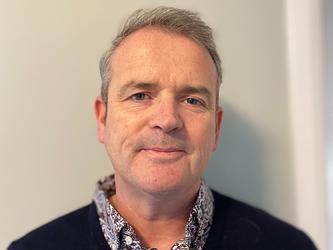Commercial break: How ITV understands audience signals
There is no shortage of headlines, reports, analysis, general musings and downright lies on the state of TV viewing in the UK. Whether it’s the death of scheduled TV, advertising engagement, second screening or box-set bingeing – to name but a few – TV viewing is a hot topic and changing media habits are ripe for research and analysis.
As a commercial terrestrial TV broadcaster, pretty much every media consumption trend affects ITV – which is one of the reasons Neil Mortensen, its director of audiences, is so busy.
The multitude of projects his team is involved in cover everything from leisure-time trend analysis to individual programme research. “Here, you’re working with incredibly complex problems – and millions of them,” says Mortensen.” It’s a big portfolio. It is a cliché to say my job is different every day, but it really is.”
In terms of overall direction, he adds, it’s simple: “We follow our company strategy, which has been set in place by Adam Crozier.”
However, Crozier stepped down as CEO last year, and easyJet’s Carolyn McCall has taken over as of January 2018. How the change in leadership will affect ITV’s business strategy remains to be seen, but – in the meantime – Mortensen will continue to ensure the research sits with the channel’s renewed focus on programme development.
“We have invigorated how we get the audience into idea and programme development at an early stage. That really worked well this past year. I think we’ve more than trebled the number of labels [studios, internal and external] that we work with,” says Mortensen. “It’s been one of my objectives for the team to work with as many as possible.”
Another has involved bringing all the audience functions back together, which Mortensen says helps connect the work and avoid duplication.
“We used to have disparate teams and, at its worst, you could have competing sets of information going around the building. You would also have bits of work that would only be used once,” he says.
“The way I have been able to connect things now, you get more value out of a project. ITV is a lean and efficient machine, and my job is to make the research work like that too. It should try to point to as many parts of the company as it can, without losing the original focus of the research.”
A matter of fact
A major piece of work Mortensen has done in the past year is on the factual landscape. “[It’s a] big piece of research that involves groups, lots of depth, lots of filming and some quant around it. We ended up coming up with 12 factual sub-genres, driven by the audience. I suppose, in the old days, we might have presented it and that would be it.”
Instead, they held a day’s workshop with the commissioning team to take them through all the ideas and then ran them with six of its studio development teams. “The commissioning editors gave each of the studio teams a couple of the genres to work on and let them choose a wild card.”
This allowed the development teams in ITV’s studio labels to be immersed in the audience insights and then work on specific genres of programme. Last summer, it culminated in the teams going into the ‘dragons’ den’, each spending half a day with some of the audience that had taken part in the original research. “They pitched the ideas and then we worked with the audience to make the ideas better,” says Mortensen.
There has yet to be a finished programme from the process, but Mortensen says his fingers are crossed and he hopes it becomes an established part of how the company works with research.
Six Up
Another project has been going since Mortensen joined four years ago. Six Up – a reference to the 1960s Seven Up documentary that followed a group of British children, from all walks of life, every seven years from the age of seven – involves ITV, working with The Sound agency, and visiting 20 homes across the country every six months. The project fuses ethnographic depth with the longitudinal insight of a tracking survey, and gives a picture of viewing behaviours through a family and cultural context.
With this research, ITV can look at issues such as the impact of demographics, technology adoption and life-stage change on people’s TV consumption and tackle the ‘nature versus nurture’ debate – whether young people grow out of behaviours or if parents become more akin to their children.
Each wave of the research has led with a theme, including: the future of channel brands; the complexity of choice; branded content and the role of advertising in television today.
Six Up has had to deal with some challenges beyond just picking the right households, such as maintaining participants’ long-term interest and balancing closeness and impartiality.
“Often, the other syndicated and public data we get doesn’t look at people enough,” says Mortensen. “It doesn’t answer the specific business issues that we have. When we visit these families – which are chosen for their different life stages and technological prowess – we are looking for signals that are going to take behaviours mainstream.
“We are unashamedly big in our ambitions: we want to recognise the future of television.”
Mortensen says one of the things learned from this project is not to generalise or make assumptions – for instance, young people do watch live TV and older people do watch Netflix. “This has been one of the best insight generators we have had for the business,” he says. “Each time we go in to see the families, we investigate a different subject.
“We did a brilliant one at the start of this year; we went back into our UK homes, but then also visited homes in Madrid, Stockholm and New York. We wanted to identify the things that were just human and were happening anywhere.”
To avoid confirmation bias, Mortensen believes research needs to burst the bubble and ensure those working in the business look beyond their own behaviour. “Our job is to be the voice of the audience for ITV,” he says.
Those who work in advertising and media invariably live near London, commute on a train, work long hours, go out in the evening and may only watch one hour of TV; but in the UK as a whole, lots of people are home by 6pm and can easily watch three and a half hours of TV.
Compared with many businesses of ITV’s size, Mortensen’s team is relatively lean. It can vary in size depending on the project, but is usually around 30 people – and they work across entertainment, commercial, international, studios, online brands and strategy performance. Of course, he uses outside resources for his ‘audience tool kit’, including YouGov for its panel.
“We work with [YouGov] in numerous ways across the year – a bit of quant and online qual, lots of different things, including our brand and promo tracking,” explains Mortensen.
In addition, he has a new community, ITV Village, to call upon. “It’s like a little social network for TV and ITV viewers. We do the usual thing and buy sample, like everyone else, and we are expanding the panel from our current registered users.
“It’s interesting, because it doesn’t always have to be nationally representative. If we’ve got Love Island running, for example, we might just want to speak to 50 or 100, real, massively passionate fans.
“We can talk to people as things are going out on air. You can use those communities in all sorts of different ways.”
As ITV is a commercial broadcaster, a fair degree of the research is within the commercial arena. “It’s about innovation. Quite often, you are doing stuff that is based around small parts of communication: does this work? Does product placement work? Product placement is not obvious, so you can’t ask people about it – you have to use more implicit testing.”
A significant difference between commercial and programme research is that, in commercial, you’re trying to prove that something works and why, which is often not what’s behind programme research.
“With programme understanding, you’re just trying to get to the truth about how people feel. We get a bit transfixed with the new and shiny. Often I say to my guys: ‘You know what, the best way we solve this problem is just by asking people whether they like it or not.’ Sometimes it’s as simple as that,” explains Mortensen.
Compelling proposition
For drama, it is mostly in the hands of the commissioners, but what Mortensen and his team can do is give the commissioners a sense of what is happening in the UK, and insight into other territories – which dramas are working and why.
With offices around the world, there is also international work. For example, they are currently researching Love Island in Germany, where it was sold to RTL2.
“We will do work around their show and how it went. Then we will meld it with the work that we have done here. It becomes a more compelling proposition that it has worked in more markets than just the crazy UK.”
Beyond ITV, Mortensen is actively involved in the Broadcasters’ Audience Research Board (Barb), where he sits on its board. Barb is currently full steam ahead for the launch, in March, of Dovetail – its project to deliver comprehensive programme and commercial content-viewing measurement across all platforms.“We know the figures already – it’s just a matter of getting them all in one place in a consistent, TV-like measurement,” says Mortensen. “We would like to know the total programme performance of every show that we put out. I think the Dovetail contract is going to really allow us to do that.”
A major challenge for Mortensen is ensuring that ITV gets sufficient cut-through at a time when so much attention is on streaming video on demand (SVOD) players – and how to research that is no small ask.
“It’s such a competitive marketplace now,” he says. “Netflix and Amazon get a huge share of emotion – a huge share of voice – above their share of actual audience. We are battling through a lot of that noise.”

We hope you enjoyed this article.
Research Live is published by MRS.
The Market Research Society (MRS) exists to promote and protect the research sector, showcasing how research delivers impact for businesses and government.
Members of MRS enjoy many benefits including tailoured policy guidance, discounts on training and conferences, and access to member-only content.
For example, there's an archive of winning case studies from over a decade of MRS Awards.
Find out more about the benefits of joining MRS here.














0 Comments